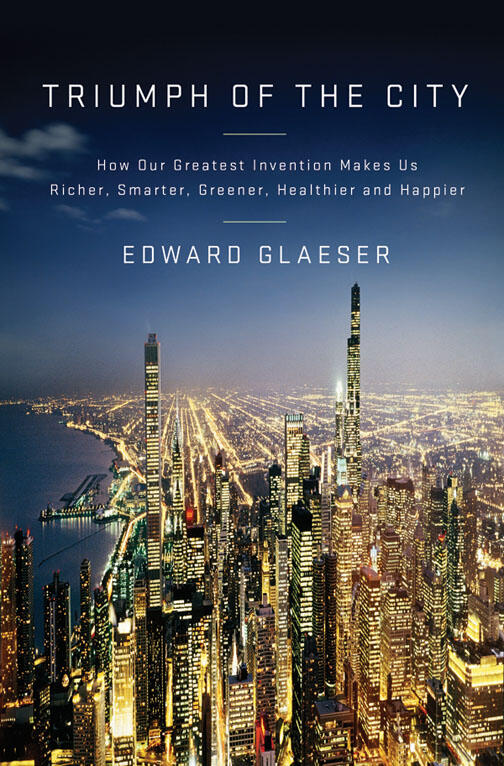Cities are good after all
Americans crave the suburbs, but Edward Glaeser ’88 praises urban life
Economist Edward Glaeser ’88 has adopted an unusual focus: the dynamics of cities. His timing is propitious, given the milestone we passed in 2008 — half the world’s population now lives in urban areas. Raised in Manhattan and today a professor of economics at Harvard, Glaeser is passionately fond of urban life, as suggested by the title of his new book, Triumph of the City: How Our Greatest Invention Makes Us Richer, Smarter, Greener, Healthier, and Happier (Penguin Press).
His approach is cheerfully iconoclastic. Cities usually get bad press for being crowded, dirty, and dangerous, but Glaeser celebrates them as places where smart people meet other smart people and become “enormously productive” — they “produce new thinking” and spur entrepreneurial innovations that lead to riches. More money is earned in New York City than in all of Oregon or Nevada — and that’s just between 41st and 59th Streets.
Great metropolises are filled with indigents, but that’s a paradoxical sign of their vitality. Glaeser argues that “cities don’t make poor people; cities attract poor people.” The squalid slums of Rio are not unlike Manhattan’s Lower East Side of a century ago, a first stop for peasants fleeing rural poverty and dreaming of climbing the social ladder. Such paradoxes abound in the book: New Yorkers live longer than the rest of us, and they consume far less energy than suburbanites who ostensibly have returned to nature.
Centrist rather than ideological in his views, Glaeser does not aim to tell readers, “You must move to the city.” Instead, he favors “a choice of lifestyle.” For those who long to live in New York, he wants the place to be much less expensive, so that the option becomes a realistic one.
In part he blames the preservation movement for the inflated prices in top cities. He targets the late, legendary New York urbanist Jane Jacobs, whom he admires for her groundbreaking ideas about cities first voiced in the 1960s, and yet faults her for insisting that urban environments should be kept low-rise, with retention of countless historic structures. Manhattan desperately needs to build higher, Glaeser argues: When City Hall prohibits new housing stock, prices spiral upward and in-migration ceases. The city begins to atrophy.
Preservation groups ought to be limited to a certain number of targeted buildings per city, he says. Once the quota of preserved buildings is reached, the wrecking ball ought to swing so new construction can begin. He recalls his own childhood on 69th Street. “Would I be sad if those brownstones and that church were replaced by high-rise apartment buildings?” he asks of his former neighborhood. Not if new construction would “make it possible for many other children to experience, as I did, the wonders of growing up in New York City. I’ll take the side of people over buildings any day.”
W. Barksdale Maynard ’88 is the author of five books on American history, including Woodrow Wilson: Princeton to the Presidency.













No responses yet